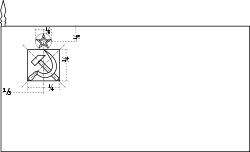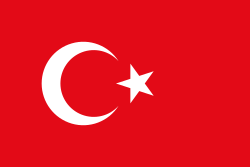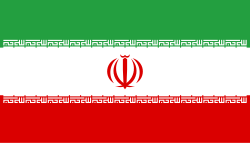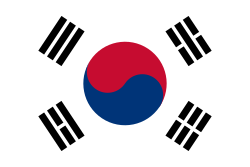Mehmet Âkif Pirim
| Mehmet Âkif Pirim | |
|---|---|
| Narození | 17. září 1968 (55 let) Rize |
| Povolání | zápasník |
| Některá data mohou pocházet z datové položky. Chybí svobodný obrázek. | |
| Přehled medailí | ||
|---|---|---|
| zlato | LOH 1992 | řecko-římský do 62 kg |
| bronz | LOH 1996 | řecko-římský do 62 kg |
| Mistrovství světa v zápasu řecko-římském | ||
| stříbro | MS 1991 | pérová váha |
| Středozemní hry | ||
| zlato | ME 1991 | zápas, řecko-římský |
| zlato | ME 1993 | zápas, řecko-římský |
| zlato | ME 1997 | zápas, řecko-římský |
Mehmet Âkif Pirim (* 17. září 1968 Rize, Turecko) je turecký zápasník, bývalý reprezentant, později trenér řecko-římského zápasu. V roce 1992 na olympijských hrách v Barceloně vybojoval v kategorii do 62 kg zlatou a v roce 1996 na hrách v Atlantě ve stejné kategorii bronzovou medaili.
V roce 1991 vybojoval stříbro na mistrovství světa. V roce 1991, 1993 a 1997 zvítězil na Středomořských hrách. V roce 1999 se nekvalifikoval do turecké reprezentace a přijal nabídku Ázerbájdžánského občanství.[1] Ve stejném roce tak na mistrovství světa v Athénách reprezentoval, bez výraznějšího úspěchu, tuto zemi.[2]
Po skončení aktivní kariéry působil jako trenér turecké reprezentace[3] a z pověření FILA se věnoval vzdělávání trenérů v afrických a asijských zemích.[4].
Odkazy
Reference
- ↑ (turecky) Newspaper Hürriyet
- ↑ (anglicky) International Wrestling Database Archivováno 13. 1. 2014 na Wayback Machine.
- ↑ (turecky) Newspaper Zaman
- ↑ (turecky) Mehmet Akif Pirim e Uluslararasi Görev[nedostupný zdroj]
Externí odkazy
- Mehmet Âkif Pirim v databázi Olympedia (anglicky)
Média použitá na této stránce
Olympic Rings without "rims" (gaps between the rings), As used, eg. in the logos of the 2008 and 2016 Olympics. The colour scheme applied here was specified in 2023 guidelines.
Finská vlajka
Autor: F l a n k e r, Licence: CC BY-SA 2.5
Flag of the Kingdom of Sardinia (1851-1861) and of the Kingdom of Italy (1861-1946). Use: Civil flag and ensign. In a governmental or a military context, the crowned version (see Crowned version) was always used (as State flag and naval ensign).
(c) I, Cmapm, CC BY-SA 3.0
The flag of the Soviet Union (1955-1991) using a darker shade of red.

Flag of Iran. The tricolor flag was introduced in 1906, but after the Islamic Revolution of 1979 the Arabic words 'Allahu akbar' ('God is great'), written in the Kufic script of the Qur'an and repeated 22 times, were added to the red and green strips where they border the white central strip and in the middle is the emblem of Iran (which is a stylized Persian alphabet of the Arabic word Allah ("God")).
The official ISIRI standard (translation at FotW) gives two slightly different methods of construction for the flag: a compass-and-straightedge construction used for File:Flag of Iran (official).svg, and a "simplified" construction sheet with rational numbers used for this file.
Autor: Scroch, Licence: CC BY-SA 3.0
Flag of Bulgaria (1971-1990). Flag of Bulgaria with Bulgarian coat from 1971.
Flag of Second Polish Republic and later People's Republic of Poland in period from March 29, 1928 to March 10, 1980. Red shade used here is HTML "vermilion" #E34234. Proportion 5:8.
this is the flag of the Soviet Union in 1936. It was later replaced by File:Flag of the Soviet Union (1955-1980).svg.
Autor: F l a n k e r, Licence: CC BY-SA 2.5
Flag of the Kingdom of Sardinia (1851-1861) and of the Kingdom of Italy (1861-1946). Use: Civil flag and ensign. In a governmental or a military context, the crowned version (see Crowned version) was always used (as State flag and naval ensign).
Flag of South Korea (1949-1984)
Olympic Rings without "rims" (gaps between the rings), As used, eg. in the logos of the 2008 and 2016 Olympics. The colour scheme applied here was specified in 2023 guidelines.
Flag of South Korea from October 1997 to May 2011. In May 2011, the exact colors were specified into their current shades.
(c) I, Cmapm, CC BY-SA 3.0
The flag of the Soviet Union (1955-1991) using a darker shade of red.

















